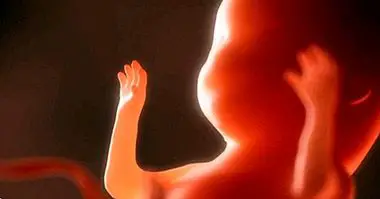Hamilton Depression Scale: what it is and how it works
If we talk about depression, we speak of one of the most prevalent mental disorders and known worldwide, causing a high level of suffering in those who suffer. Throughout history, a great amount of tools and instruments have emerged to evaluate the existence and affectation caused by this problem. One of them is the Hamilton Depression Scale .
- Maybe you're interested: "Psychometrics: studying the human mind through data"
The Hamilton Depression Scale: main features
The Hamilton Depression Scale is an evaluation instrument designed by Max Hamilton and published in 1960, created with the objective of serving as a method of to detect the severity of depression symptoms in previously diagnosed patients , as well as the existence of changes in the patient's condition over time. In this way, its main objectives are the assessment of this severity, the assessment of the effects of possible treatments on each of the components that it evaluates and the detection of relapses.
This means that the Hamilton Depression Scale is not intended for diagnosis, but for the evaluation of the condition of patients who have previously been diagnosed with major depression. However, despite this being its original objective, it has also been applied to evaluate the presence of depressive symptoms in other problems and conditions, such as in dementias.
Structure and score
This instrument consists of a total of 22 items (although the initial one consisted of 21 and later a reduced version of 17 was also elaborated), grouped into six main factors. These items consist of an element that the subject has to assess on a scale that ranges from zero to four points. Among these items we find mainly different symptoms of depression, such as feelings of guilt, suicide, agitation, genital symptoms or hypochondria, which will end up being assessed in the six factors mentioned above.
Specifically, the factors in question are the assessment of somatic anxiety, weight (do not forget that depression is frequent in the presence of eating disorders), cognitive impairment, diurnal variation (if there is diurnal deterioration for example) , slowing down, and sleep disturbances. But nevertheless Not all of these factors are equally important , the different aspects having a different weight and being weighted differently in the score (for example the cognitive alteration and the slowing down are more valued and less the agitation and insomnia).
It is a scale initially proposed to be applied externally by a professional, although it is also possible to fill in by the same subject evaluated. In addition to the scale itself, which is filled in during a clinical interview, External information can also be used, such as information from relatives or the environment as a complement.
- You may be interested: "Are there several types of depression?"
Interpretation
The interpretation of this test is relatively simple. The total score ranges between 0 and 52 points (this being the maximum score), with most of the items having five possible answers (from 0 to 4) with the exception of some elements with lower weighting (which range from 0 to two).
This total score has different cut-off points, considering 0-7 that the subject does not present depression, that a score of 8-13 supposes the existence of a slight depression, of 14-18 a moderate depression, of 91 to 22 a severe and more than 23 very severe and at risk of suicide.
At the time of assessing not the severity of depression but the existence of changes due to different aspects, including a possible treatment , it must be taken into account that it is considered that there has been a response to it if there is a decrease of at least 50% of the initial score, and a remission with scores lower than 7.
Advantages and disadvantages
In contrast to other tests that assess depressive symptomatology, The Hamilton Depression Scale has the advantage of evaluating non-cognitive elements that other scales do not usually take into account, in addition to illiterate subjects or with other alterations.
However, it also has certain drawbacks: technically it does not allow the diagnosis because it is not designed for this purpose (although it allows to evaluate the altered aspects in depression) and gives excessive weight to somatic aspects that can be confused with independent medical problems.In addition, in its original version it does not include elements as relevant as anhedonia (since it was developed before the emergence of the DSM-III diagnostic criteria).
Bibliographic references
- Hamilton, M. (1960). A rating scale for depression. J Neurol Neurosurg Psychiatry, 23: 56-62.
- NICE (2004). Depression: management of depression in primary and secondary care- NICE guidance.
- Purriños, M.J. (s.f.) Hamilton Scale - Hamilton Depression Rating Scale (HDDRS). Served of Epidemioloxía. Directorate Xeral de Saúde Pública. Galego de Saúde service.
- Sanz, L.J. and Álvarez, C. (2012). Evaluation in Clinical Psychology. CEDE Preparation Manual PIR. 05. CEDE: Madrid.



















